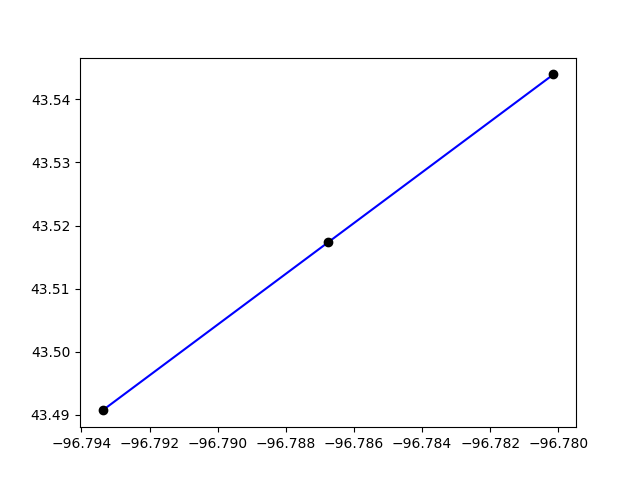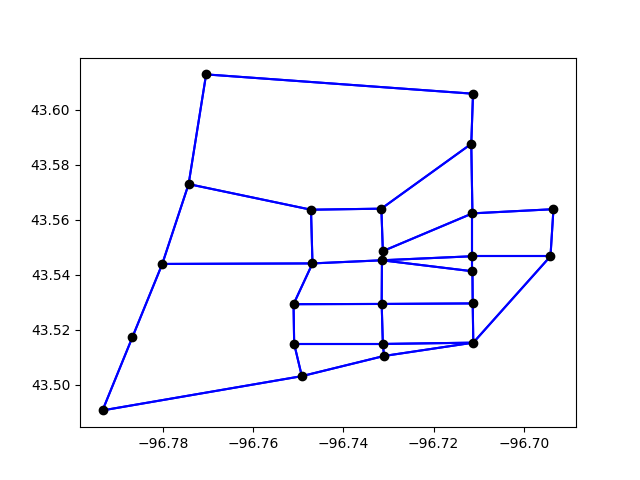Note
Go to the end to download the full example code.
Editing network geometry: Splitting link#
In this example, we split a link right in the middle, while keeping all fields in the database equal. Distance is proportionally computed automatically in the database.
# Imports
from uuid import uuid4
from tempfile import gettempdir
from os.path import join
from aequilibrae.utils.create_example import create_example
from shapely.ops import substring
import matplotlib.pyplot as plt
We create the example project inside our temp folder
fldr = join(gettempdir(), uuid4().hex)
project = create_example(fldr)
We will split link 37 right in the middle. Let’s get the link and check its length.
links = project.network.links
all_nodes = project.network.nodes
link = links.get(37)
print(link.distance)
6010.108655014215
The idea is basically to copy a link and allocate the appropriate geometries to split the geometry we use Shapely’s substring.
new_link = links.copy_link(37)
first_geometry = substring(link.geometry, 0, 0.5, normalized=True)
second_geometry = substring(link.geometry, 0.5, 1, normalized=True)
link.geometry = first_geometry
new_link.geometry = second_geometry
links.save()
The link objects in memory still don’t have their ID fields updated, so we refresh them.
links.refresh()
link = links.get(37)
new_link = links.get(new_link.link_id)
print(link.distance, new_link.distance)
3005.040184141035 3005.0684894898027
We can plot the two links only
plt.clf()
plt.plot(*link.geometry.xy, color="blue")
plt.plot(*new_link.geometry.xy, color="blue")
for node in [link.a_node, link.b_node, new_link.b_node]:
geo = all_nodes.get(node).geometry
plt.plot(*geo.xy, "o", color="black")
plt.show()

Or we plot the entire network
plt.clf()
curr = project.conn.cursor()
curr.execute("Select link_id from links;")
for lid in curr.fetchall():
geo = links.get(lid[0]).geometry
plt.plot(*geo.xy, color="blue")
all_nodes = project.network.nodes
curr = project.conn.cursor()
curr.execute("Select node_id from nodes;")
for nid in curr.fetchall():
geo = all_nodes.get(nid[0]).geometry
plt.plot(*geo.xy, "o", color="black")
plt.show()

project.close()
Total running time of the script: (0 minutes 0.731 seconds)